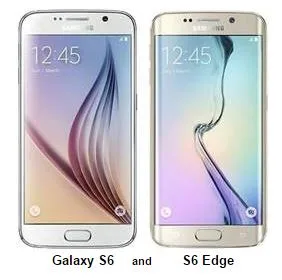Last week Samsung Display officially released some details concerning its “most advanced display,” the third-gen flexible OLED used in the Galaxy S6 Edge smart phone.

That the new details are now official does not make them surprising, but together with the accompanying verbiage in Samsung Display’s recent media backgrounder and other sources, they provide an interesting perspective on where Samsung Display and Samsung see the display technology going, not to mention the products in which it is embodied.
The recently released Samsung Galaxy S6 Edge has a flexible OLED display that wraps around each edge of the phone. (Photo: Ray Soneira, DisplayMate)First, the new display measures 5.1″ on the diagonal and is Quad HD (2560 x 1440 pixels), which results in a pixel density of 577 pixels per inch. My colleague Ray Soneira calls this display the best-performing smartphone display released to date, a designation he has bestowed sequentially on each of the last few generations of Samsung smartphone and phablet OLEDs. Note that the display in the accompanying Galaxy S6 phone without the curved edges has similar specifications but is fabricated on a conventional rigid substrate.
The newly released details are:
1) The Edge display uses a polyimide substrate that is less than 1mm thick. Samsung Display says this is half the thickness of the glass substrate in conventional mobile LCDs, and the Edge display is the thinnest display available today.
2) The curvature in the S6 Edge is 6.5R (at each edge).
3) The display supports 100% of Adobe RGB, “a 30% wider range of colors than sRGB”.
For an in-depth look at the new displays, I heartily recommend Soneira’s analysis on Displaymate.com/mobile.html.
It has been widely reported that the S6 and S6 Edge are selling extremely well, a success Samsung badly needed after the disappointing sales of the previous S5. According to Samsung Display spokesperson Ho Jung Kim, “We are witnessing enormous interest in our leading-edge flexible OLED display, even more than had been anticipated. We are working extra hours to increase our production levels in order to meet the extremely high demand”.
It is still necessary to carefully describe what you mean by a “flexible” display. Samsung Display does this well in its media advisory: “Flexible AMOLED technology will continue to evolve from curved, to bended, foldable and even ‘rollable’ designs. Our ‘Edge’ displays are actually the vanguard of the second phase – bended displays”. (Samsung consistently uses “bended,” not “bent.”)
For years, the rollable display has been seen by some as the pinnacle in this continuum, with images of displays being pulled out of pen-like housings like a window shade. I have my doubts. What do you do with the window shade after you’ve pulled it out of its housing? You could use two hands to hold it in the air like a newspaper, or, with a different type of housing, you could have a pantograph-like frame to hold it out for you, but that adds to bulk and weight. And neither of these solutions was originally conceived with the modern ubiquity of the touch interface in mind.
Recently, Samsung patented what could be a much more practical concept, which sits somewhere between “bended,” foldable and rollable. (See figure.) The guts of the phone are contained in “a plurality of segment members sequentially connected”. (I love the way patent attorneys write.) The segments form a bracelet that can be worn on the wrist, and each segment is rigid, the device could utilize rigid batteries and other components, as well as flexible ones. The flexible display overlays the bracelet, which offers a stable platform for the touch interface.
Samsung’s “Smartphatch” bracelet phone concept (Figure: Samsung)This conceptual cross between a smartphone and smartwatch – let’s call it a “Smartphatch” – gets your phone out of your purse or pocket, without getting into the smartwatch’s basic problem of duplicating the device and the functions you already have with you. It’s just a patent, but it represents a concept that would, I believe, greatly appeal to consumers. – Ken Werner

